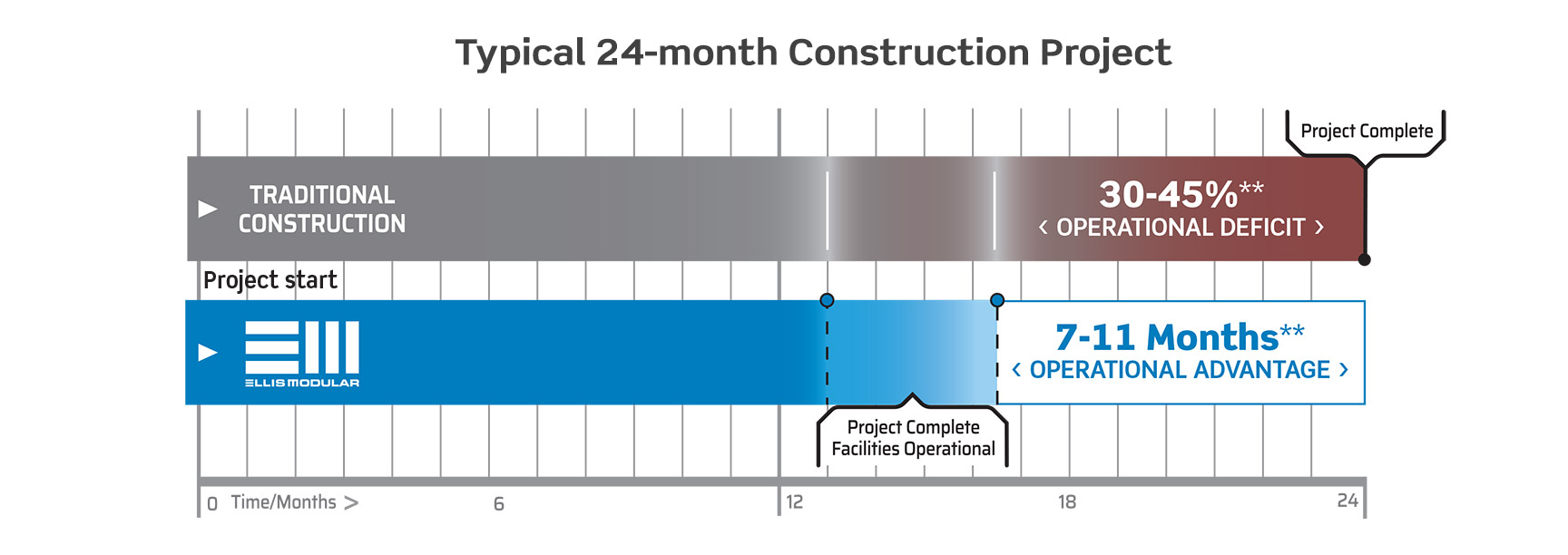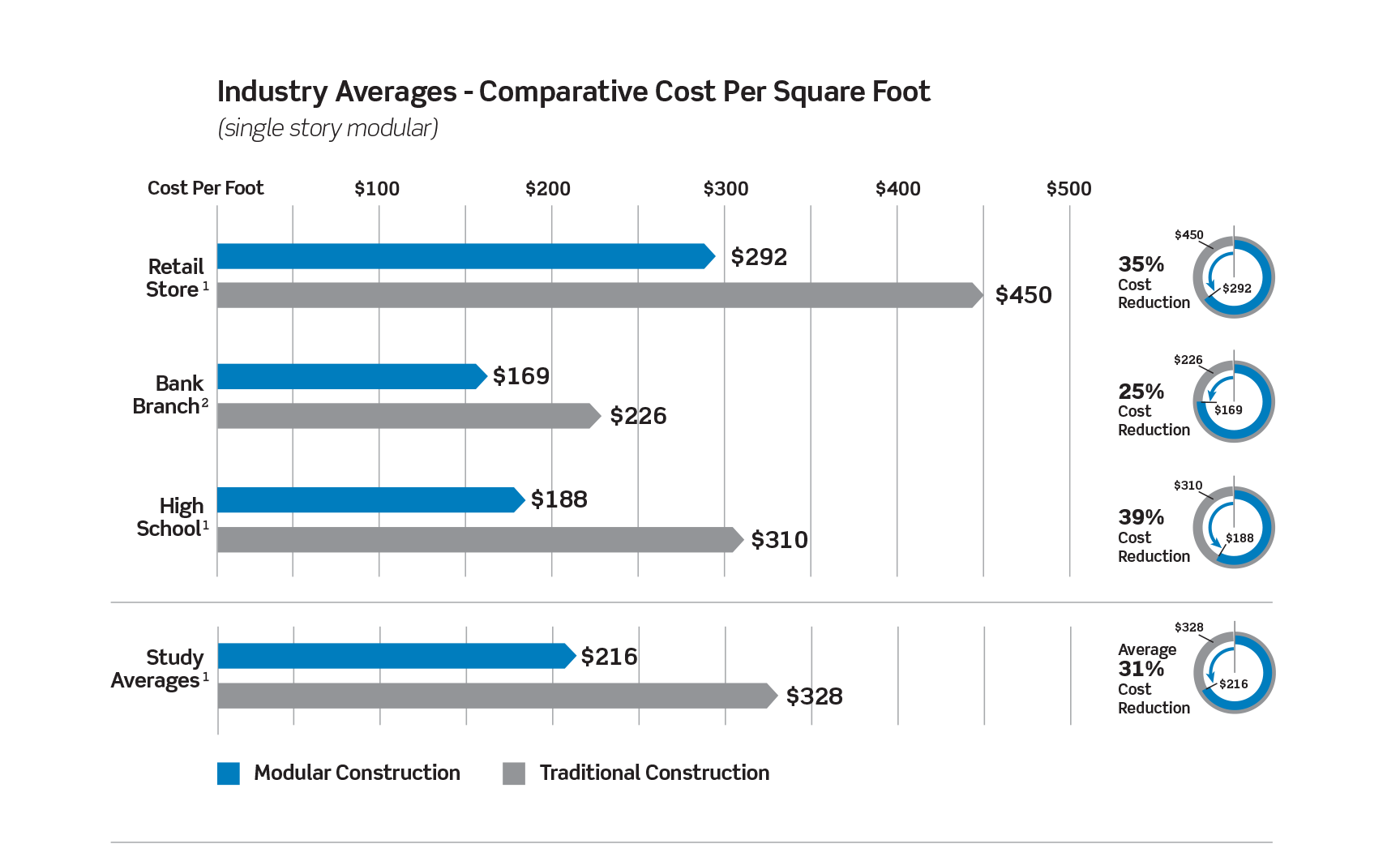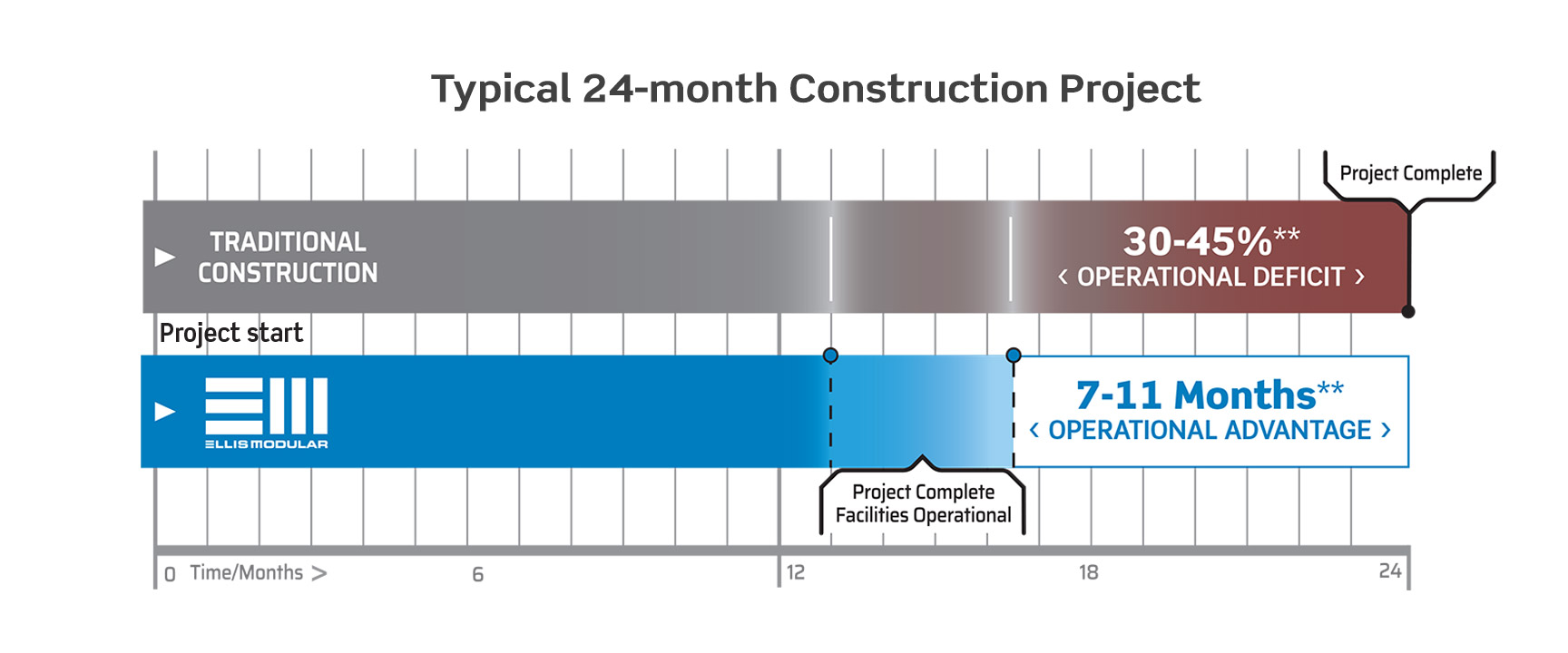Know the Facts:
Modular vs Traditional Construction
Pre-fabricated modular, on-site construction takes full advantage of what a controlled assembly environment has to offer. With this advantage comes savings in construction costs overall; time savings in planning, engineering and construction; avoidance of weather delays typical for site-built frame and stick construction; quality management of materials and assembly; reduced materials waste and cost; and increased safety by reducing on-site deliveries and construction traffic.
- Savings in construction costs overall
- Time savings in planning, engineering and construction
- Avoidance of weather delays typical for site-built frame and stick construction
- Quality management of materials and assembly
- Reduced materials waste and cost
- Increased safety by reducing on-site deliveries and construction traffic
- Less environmental impact due to less site traffic and construction equipment










